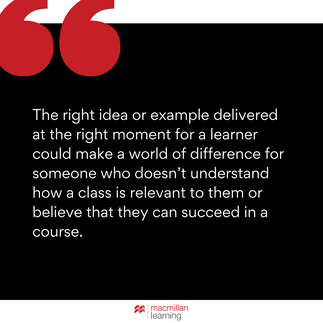What Does an Editor at an Educational Publisher Do?
- Subscribe to RSS Feed
- Bookmark
- Subscribe
- Printer Friendly Page
- Report Inappropriate Content
In the HBO Max series Julia, we are served a tantalizing account of the chef’s relationship with the legendary editor Judith Jones, who championed Julia Child’s work on what Jones rightly believed would become the definitive introduction to French cooking for home cooks in the U.S. The show conjures the glamorous life of an editor who spends her days in a New York office, pouring over a pile of typewritten manuscript, pencil in hand, and travels to Boston by train to test recipes with her favorite author in a cozy, Cambridge kitchen. Now that is a fantasy that anyone who ever grew up wanting to be an editor might dream about.
Maybe aspects of publishing worked that way at some point? But as you likely guessed, almost everything about being an actual editor is different, especially now, and especially for those of us who work at an educational publisher.
My career in publishing started at a small trade press, but I stumbled onto my dream job when I landed at Bedford/St. Martin’s because my favorite part of writing has always been revising. As an educational publisher, we get to ask instructors and students who use our materials what they think and how they work, and then we can actually make improvements based on what our customers need and want.
Instructional content has to work in a learning ecosystem that is flexible enough to meet its users where they are. Digital content delivery is not new. Even Mastering the Art of French Cooking is now available as an ebook. (After all, cookbooks and textbooks are close relatives, designed to meet the needs of users with a range of expertise.) Publishers have created widely used quizzes, videos, tutorials, and games, on web sites and CD-ROMs for decades. We’ve seen multiple generations of learning management systems, software, and courseware launched and retired. However the rapid adoption of digital materials during the pandemic has accelerated the need to ensure digital elements—from assessment and interactives to instructional reading and video—work flawlessly together to support pedagogical goals. Editors design that content to support a variety of approaches to teaching, regardless of whether the content appears in an ebook, an assessment question, or a tutorial delivered in courseware.
The added promise of digital delivery is that we can update content when needed, with an even tighter focus on the
That’s our hypothesis anyway. Like Jones in Julia, we want to get our hands dirty, plunge into the work of testing ingredients and learning with our colleagues. We are all motivated by learning, and even failing, unlearning, and relearning. Success requires us to question our assumptions, continually, and to do it collaboratively. Ideally we work in close, cross-functional teams; even within editorial, media editors, development editors, program managers, and program directors (once called “publishers”) all play specialized, important roles. Our colleagues in market development, marketing, sales, and product all contribute insights through the lens of their work that deepen our understanding and enable us to make better decisions.
Surveys, reviews by peers, conference and campus conversations, classroom observations, sales’ feedback, and disciplinary research have long been part of how we develop an understanding of our customers. These days, as we collect new kinds of data and add new research methodologies to our toolkit, our methods are more aligned with those of our partners’ in UX, learning science, and the product team. As digital usage grows, we look for new insights, test new hypotheses, and develop a more nuanced understanding of what types of content best support students, and, more importantly, what is missing.
The enduring not-so-secret ingredient in our collaborations, of course, is the role that our authors play in conceiving, testing, writing, revising, and revising (again) the content at the heart of our products. While their research and teaching experiences inform every aspect of our work together, it’s our authors’ creative energy and generosity that end up making an editor’s work engaging. So much of what I’ve learned from working with our authors has made me a better editor and colleague: Nancy Sommers’ advice about commenting on student writing, Elizabeth Wardle’s insights about writing in a new genre, Staci Perryman-Clark’s research on culturally relevant pedagogies, and Joshua Gunn’s guidance that audiences need visual breaks while listening.
Our circle of collaborators is quite a bit larger than the one in Julia’s kitchen. Widen that table to include many more colleagues, all squarely focused on improving teaching and learning for the instructors and students who use our resources, and you begin to get a picture of what editors at Macmillan Learning do.






